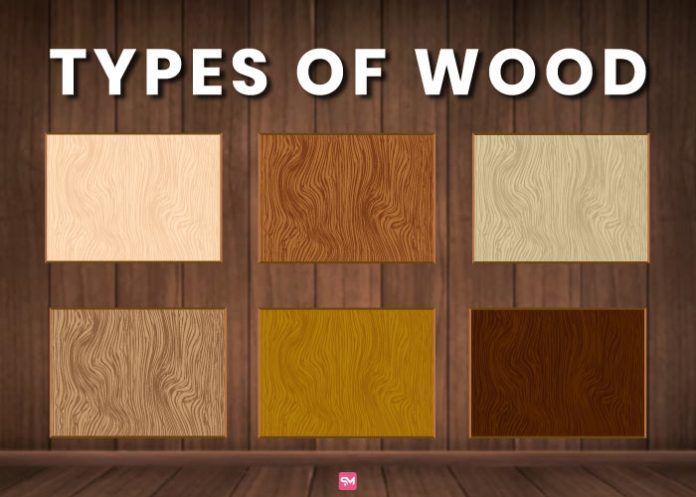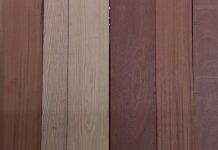Have you ever pondered the criticality of wood choice when buying or creating furniture? Most of us tend to focus heavily on design and functionality and forget that the type of wood significantly impact the durability, appearance, and even sustainability of our furniture.
Every species of wood, from oak to maple, cherry to walnut, pine to cedar, has a particular personality and benefits. But with huge benefits also come some downsides. Because of this, it’s critical to perform your research and select the ideal wood for your project.
Do not fret; I have your back. I’ll lead you through choosing the best wood for your furniture. By the hour you finish reading this post, you’ll have a better idea of what kind of wood perfectly complements your furniture. So let’s start right now!
6 Factors to Consider When Choose Best Type of Wood for Furniture
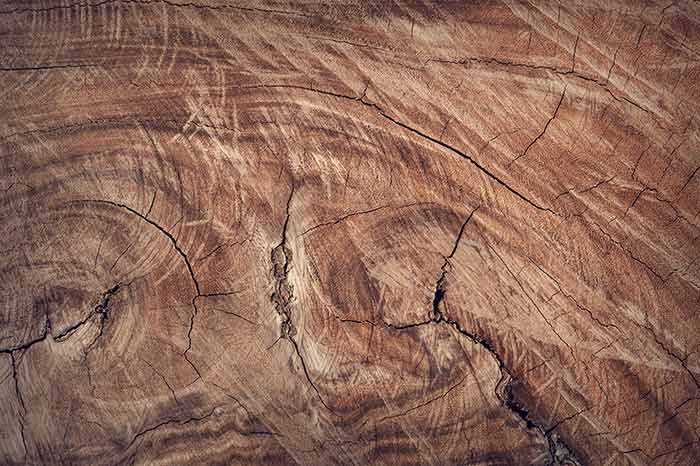
Before heading straight to the lumberyard, it’s crucial to consider what you need from your wood.
- Strength and resilience: Nobody wants a sagging cocobolo desk or an unsteady chair, so take into account the wood’s strength and resilience. While some timbers can sustain tremendous weight and pressure, others are more resistant to dents and scratches.
- Furniture’s appearance and color can serve as a means of expression in addition to serving a practical purpose. The wood can vary in appearance and color from light to dark, delicate to striking. Therefore, it’s up to you to determine which wood complements your style and enhances your environment.
- Grain pattern and texture: The grain pattern and texture of a piece of wood can give it a distinct appearance and feel. While some woods have a chaotic and unpredictable pattern, others have a smooth and consistent texture. Your selection will depend on the ambiance and mood you want to create.
- Workability and finishing simplicity: Woodworking is an art form; thus, you need wood that is simple to work with and polish. Although certain woods are simple to saw, sand, and stain, others demand more work and skill. Therefore, it’s crucial to take your experience level and the available tools into account.
- Sustainability and environmental friendliness: As environmental awareness grows, it is essential to select wood that is both sustainable and environmentally friendly. Though certain woods come from sustainably managed and replenished forests, others are at risk of extinction.
- Cost is the last factor to consider, as some woods are more expensive than others due to their scarcity and demand. Strike a balance between quality and affordability by considering your budget.
Different Types of Wood for Furniture
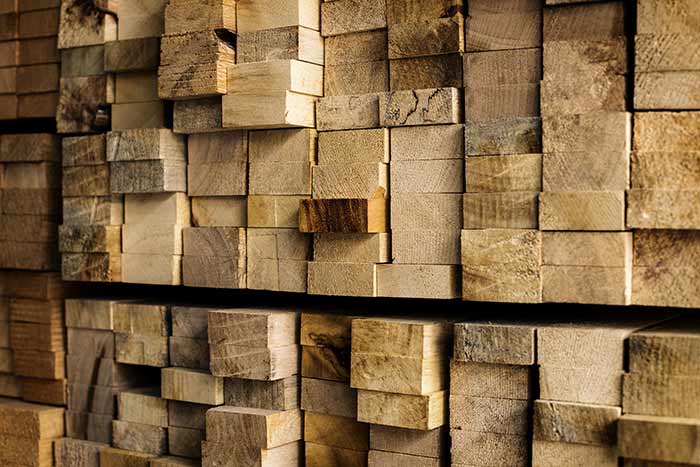
First things first, let’s break down the two main categories of wood for furniture: Hardwoods and Softwoods.
Hardwoods, derived from deciduous trees, are famous for their density and durability. On the other hand, softwoods are harvested from evergreen trees and tend to be more flexible and affordable. Each wood has its own set of pros and cons, depending on your specific needs and preferences.
Now, let’s dive into some of the most popular hardwoods used in furniture-making. Oak, for example, is a timeless classic known for its toughness and durability. With its fine grain and light color, Maple is an excellent choice for contemporary furniture. Cherry is a beautiful hardwood with a unique grain pattern and reddish-brown color that adds warmth and richness to any piece. Lastly, walnut is a premium hardwood that exudes luxury with its dark color and swirling grain.
| Popular Hardwoods | Their Properties |
| Oak | Strong, hard, dense with close grains |
| Maple | Fine, unique texture and shock resistant |
| Cherry | Unique grain pattern and reddish brown-color |
| Walnut | dark colored wood with attractive grain patterns |
Manufacturers often use softwoods, such as pine, cedar, and fir, for furniture-making due to their affordability and ease of workability. Pine is a popular choice for its light color and inexpensiveness, while cedar’s natural resistance to insects and decay makes it an excellent option for outdoor furniture. Fir, typically used in construction, is also an option for budget-friendly furniture projects.
| Popular Softwoods | Their Characteristics |
| Pine | Light Color and inexpensive |
| Cedar | Durable, light in weight and easy to work with |
| Fir | Excellent strength wood |
Read More: Furniture Trends
Hardwood vs. Softwood – Which Type of Wood is Ideal For You?
Selecting the ideal type of wood for your furniture project is a complex decision. One of the most critical choices you will make is whether to opt for a hardwood or a softwood. Each type of wood has unique features that impact durability, appearance, and quality. So, let’s delve into a comparison of hardwoods and softwoods based on these three factors.
| Hardwoods | Softwoods |
|---|---|
| More tough and are more resistant to wear and tear, scratches | Less dense and less durable |
| Generally have intricate and complex grain structure | Typically lighter in color and have a simpler grain pattern |
| Hardwoods are of higher quality | Softwoods are less durable, dense and strength |
Durability: Hardwoods are popular for their toughness and resilience, making them an excellent choice for high-traffic areas or furniture that undergoes heavy use. Due to their dense structure, hardwoods are more resistant to wear & tear, dents, and scratches. Softwoods, in contrast, are less dense and less durable, making them better suited for less demanding applications. However, some softwoods can be just as durable as hardwoods if the manufacturer appropriately treats and maintains them.
Appearance: Hardwoods and softwoods have unique features that contribute to their appearance. Hardwoods generally have intricate and complex grain patterns, which can create stunning, one-of-a-kind pieces. They also have a wide range of colors and shades, ranging from light maple to dark walnut. Softwoods, in contrast, are typically lighter in color and have a simpler grain pattern, giving them a more rustic or casual look. Ultimately, the wood’s appearance you choose will depend on the style and expression you’re going for
Quality: We consider hardwoods of higher quality than softwoods due to their density, durability, and strength. However, some softwoods, like cedar and redwood, are well-known for their exceptional quality and resistance to rot and insects. Quality can also be influenced by wood harvesting and processing methods, so choosing a reputable supplier is essential.
At the end of the day, the decision between hardwoods and softwoods will depend on your specific needs and preferences. Hardwoods offer exceptional durability and a wide range of colors and grains, while softwoods are typically more affordable and easier to work with.
Popular Types of Hardwood: Prices, Characteristics and their Origins
As we delve deeper into the world of hardwoods for furniture production, it becomes increasingly apparent that each type of hardwood has its own unique attributes, resulting in differing price ranges depending on quality, availability, and demand. Let’s explore some of the most common types of hardwood used in furniture making and their distinct characteristics, origins, and cost variances.
Oak: One of the most popular hardwoods in furniture making, Oak is highly coveted for its timelessness and durability. Native to North America and Europe, it is available in two main varieties – red oak and white oak. Red oak presents a pinkish tint with a more visible grain, while white oak offers a yellowish hue with a more subdued grain. Depending on quality and thickness, prices for oak range from $4 to $8 per board foot.
Maple, another highly favored hardwood, is prized for its light color and uniform grain pattern. It is native to North America and is available in two main varieties: hard maple and soft maple. Hard maple boasts greater durability and more distinctive grain, while soft maple is more affordable and straightforward to work with. Prices for maple range from $4 to $17 per board foot.
Cocobolo, or Rosewood, is a tropical hardwood renowned for its distinctive warm color and unique grain pattern. Originating from Central and South America, it is highly sought after for its exquisite beauty and durability. The collectibles made from this hardwood are rich in look and are considered great gifts. The price of Cocobolo can range from $30 to $40 per board foot, depending on the quality and availability.
Walnut is a luxurious hardwood revered for its rich, deep color and intricate grain pattern. It is native to North America and Europe and is available in two main varieties – black walnut and English walnut. Black walnut, the more common variety in the United States, has a darker shade and a more pronounced grain, while English walnut has a lighter color and a more subtle grain. Depending on quality and thickness, prices for walnut can range from $9 to $17 per board foot.
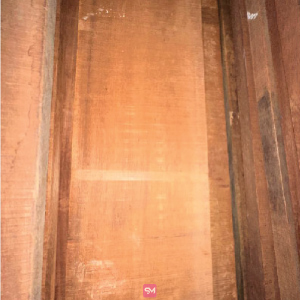
Mahogany is a type of wood originating from several tropical hardwood trees belonging to the Meliaceae family, Mahogany boasts a captivating reddish-brown color and a straight, delicate grain pattern. As a result, it is a widely preferred choice for traditional furniture styles that require a dash of elegance and sophistication. The timber’s durability, strength, and resistance to decay and insect damage have made it a favored material for crafting indoor and outdoor furniture items.
Furthermore, owing to its alluring appearance, Mahogany is often used for decorative veneers, adding to its versatility and desirability in the furniture industry. While it is primarily indigenous to the Americas, it is also cultivated in Africa and Asia, augmenting its accessibility worldwide.
However, the price of mahogany wood is subject to fluctuations depending on various factors, including but not limited to the type, quality, finish, and source of the wood.
According to online resources, the cost of unfinished mahogany wood can range between $6 and $30 per board foot, while flooring or decking pieces can cost roughly between $6 and $10 per square foot. Moreover, a commonplace board size, such as a 4×4, can demand anywhere from $4 to $8 per piece. For those seeking mahogany wood floors, prices can oscillate from $7 to $65 per board. In contrast, mahogany cabinets could be priced between $25 to $45 per board, depending on the timber’s location, availability, and demand.
Cherry wood is a revered and cherished hardwood, particularly esteemed in the realm of American furniture. Derived from the American Black Cherry fruit tree, this smooth-grained hardwood boasts a natural reddish-brown hue that evolves, transitioning from a delicate light pink to a luxurious, deep reddish-brown.
As a testament to its desirability, cherrywood ranks as the most sought-after furniture hardwood in the United States. Woodworkers and furniture enthusiasts are drawn to its unparalleled aging process, resulting in a lustrous patina that enhances its visual appeal.
Sourced from the esteemed American Black Cherry Tree (Prunus Serotina), it is not only admired for its aesthetics but also its durability, scoring an impressive 995 on the Janka scale.
It is used in crafting furniture, cabinets, flooring, and various kitchen accessories. With a cost ranging from $3 to $10 per board foot, cherry wood remains in the affordable range.
Some Common Types of Hardwood:
- Cherry
- Birch
- Hickory
- Ash
- Beech
- Teak
- Wenge
Popular Types of Softwoods: Prices, Characteristics and their Origins
We characterize softwoods by their affordability compared to hardwoods, making them a popular option for furniture production. Here are a few kinds of softwood the manufacturers employ in furniture making.
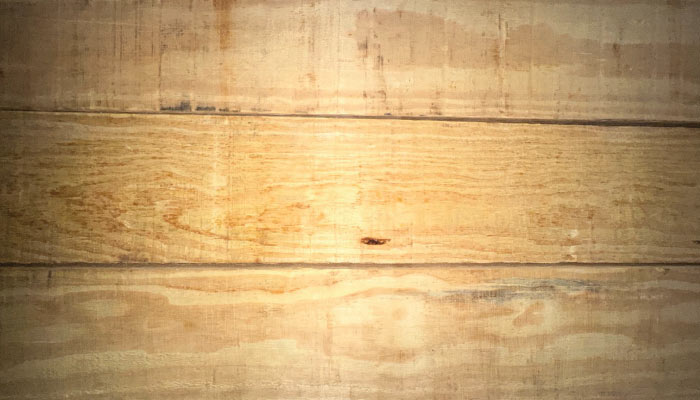
To begin, pine wood, renowned for its light color and distinctive grain pattern, is a highly well-liked and low-cost option for your furniture. Manufacturers further enhance Pinewood through staining or painting, and it is relatively easy to work with. These types of wood are available in various regions across the world, including North America, Europe, and Asia. Its price ranges from approximately $3 to $8 per board foot, depending on the wood’s quality and grade.
Another common softwood utilized in furniture production is redwood. It is particularly famous for its distinctive red hue and remarkable durability, which makes it a suitable choice for outdoor furniture due to its natural resistance to insects and decay. Redwood has a straight grain and a consistent texture and is native to the western United States. The cost of redwood varies from around $2 to $9 per board foot, depending on the wood’s quality and grade.
Larch wood is yet another durable softwood with a yellowish-brown hue, frequently employed in furniture production. Recognized for its strength, resistance to decay, and workability, you can find it in North America, Europe, and Asia. Larch wood costs approximately $3 to $7 per board foot, depending on the wood’s quality and grade.
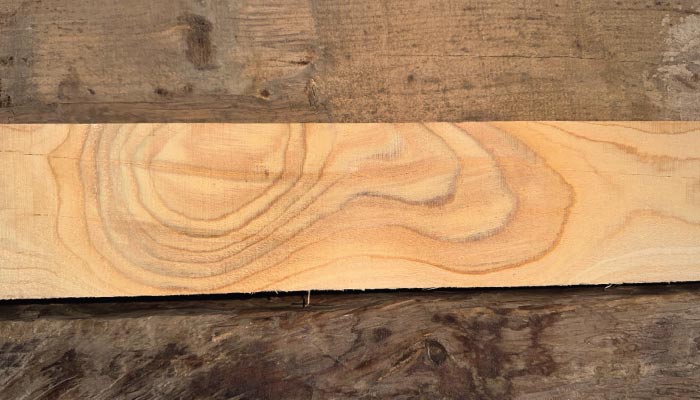
Cedarwood, which has a reddish-brown hue and an unmistakable aroma, should be your preferred choice for outdoor furniture due to its innate resistance to rot and insects. It has a straight grain and fine texture, which you can find in North America. Cedar wood is accessible at approximately $3 to $9 per board foot, as per the quality and grade.
Hemlock wood, with its favorable strength-to-weight ratio, is esteemed for its excellent working properties. It requires careful drying and also yields a high-quality product, showcasing even density for superior machining.
Non-resinous and receptive to stains and finishes, it sands smoothly, glues effortlessly, and boasts impressive nail and screw-holding abilities. Priced at $7 to $8.50 per board foot, Hemlock falls within the mid-range, offering exceptional value for its versatile qualities.
With a straight-grained, even texture and subtle luster, Hemlock stands as a reliable choice for various woodworking applications.
Common Types of Softwood:
- Spruce
- Fir
- Hemlock
- Cypress
- Douglas Fir
- Yew
3 Tips To Look After Your Hardwood and Softwood Furniture
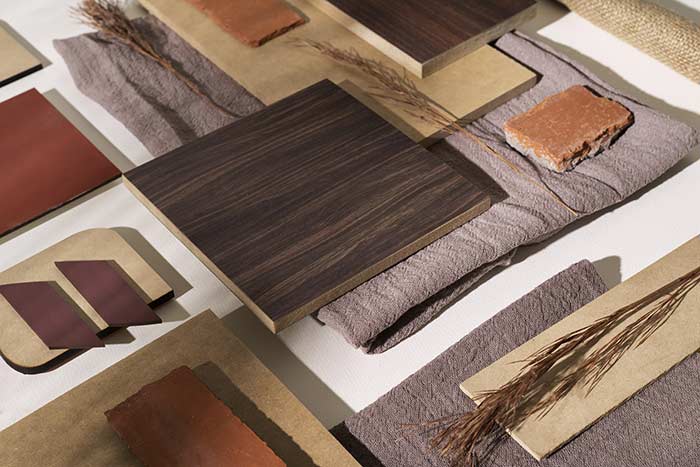
The disparity between hardwood and softwood is significant, and their distinct attributes call for different care methods. Hardwood furniture, although more long-lasting and less susceptible to rot, presents a prominent and heavy grain that necessitates safeguarding from fluids and aqueous substances. On the other hand, softwood furniture, while more affordable and lightweight, has a propensity to expand and contract in response to humidity variations, requiring periodic application of stains or paints to avert deformation.
- When it comes to cleaning your furniture, it’s best to utilize a mild soap solution mixed with water and a tender cloth to wipe down the surface of the wood carefully. Afterward, it is crucial to rinse and dry the furniture entirely with another cloth. I recommend eschewing any harsh chemical agents or abrasive cleaners that could compromise the integrity of the wood’s surface.
- Shielding your furniture is essential to preserve its longevity. Employing a suitable product such as teak oil for hardwood furniture or stain or paint for softwood furniture can avert moisture damage, fading, cracking, and warping. It is essential to heed the manufacturer’s directives and reapply as required.
- If you need restoration, you may need to sand off any existing finish or paint and apply a fresh coat of your chosen protective product. Alternatively, vinegar can remove water stains, or use wax polish to accentuate the furniture’s shine. Be careful not to over-sand and risk losing the wood’s original patina.
Read More: House Cleaning Tips
Conclusion
When selecting the perfect wood for your furniture project, you need to consider several factors, such as strength and resilience, appearance and color, grain pattern, workability, sustainability, cost, etc. You should also understand the differences between hardwoods and softwoods and their unique features, including durability, appearance, and quality. Ultimately, your choice of wood should depend on your specific needs, preferences, and budget. Perform extensive research and select a reputable wood supplier to build high-quality, sustainable wood products.


